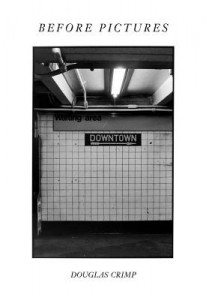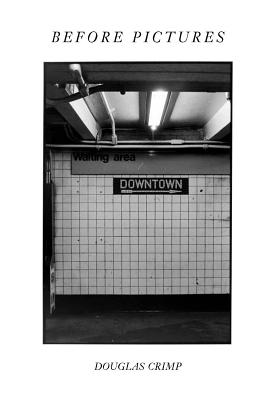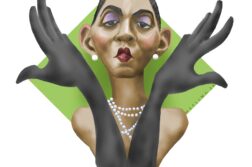 Before Pictures
Before Pictures
by Douglas Crimp
Chicago. 308 pages, $39.
DOUGLAS CRIMP is a prodigious New York intellectual. In his curation and critical writing of the late 1970s, he identified a group of emerging visual artists, notably Robert Longo, Cindy Sherman, and Sherrie Levine, who were appropriating images from popular culture in subversive new ways. They were often referred to as the “Pictures Generation” after Crimp’s 1977 exhibition, Pictures, at the Artists Space gallery.
In 1987, Crimp edited a special issue of October magazine entitled AIDS: Cultural Analysis, Cultural Activism. His contribution to this groundbreaking collection illuminated the engaged art strategies of various ACT UP collectives: “Their work demands a total reevaluation of the nature and purpose of cultural practices in conjunction with an understanding of the political goals of AIDS activism.” His discursive essays brilliantly analyzed Rainer Werner Fassbinder’s film In a Year of 13 Moons in October magazine and Trisha Brown’s “wholly new lexicon of ordinary movement performed with effortless directness” in Artforum. His critically acclaimed books include “Our Kind of Movie”: The Films of Andy Warhol (2012) and Melancholia and Moralism: Essays on AIDS and Queer Politics (2002).
Crimp’s latest book, Before Pictures, tenderly chronicles his initial years in New York City from 1967 to ’77. Interwoven personal and professional stories create a vivid historical narrative of pre- and post-Stonewall Manhattan. Moving there after college at Tulane in New Orleans, Crimp found that he “would have to learn how and where to be queer all over again” as gay sexual culture exploded all around him. His early jobs included reviewing for ArtNews, organizing the papers of society couturier Charles James, and working as a curatorial assistant at the Guggenheim. All the while he was hanging out with Holly Woodlawn, Jackie Curtis, Candy Darling, and Joe Dallesandro. His first curatorial effort was an Agnes Martin exhibition in 1971 at the School of Visual Arts Gallery, where he was an adjunct professor.
In this hybrid memoir, the author revisits his nascent critical thinking about Agnes Martin, realizing that he had been wrong to reduce her æsthetic to mathematical minimalism. He also reconciles his contradictory views on Ellsworth Kelly’s work, which he praises for its intelligence and originality, and he shares details about his failed liaison with this artist.
Sexual trysts, both casual and loving, were a crucial part of his life at this time, with the West Side piers, Greenwich Village trucks, and backroom bars his preferred stomping grounds. His drug-enhanced years dancing at Flamingo, 12 West, and Paradise Garage are reverently described as he tries to capture what is extraordinary about disco and “show how it is symptomatic of a wider experience of pleasure in our society.”
Crimp’s obsession with film led him to attend the Anthology Film Archives, while his obsession with ballet and with George Balanchine’s neo-classicism was nurtured in the upper balconies of New York City Ballet’s State Theater. As his career progressed, Crimp moved south from Spanish Harlem to Chelsea, then to Greenwich Village, then to Tribeca, and finally to the Financial District, where he currently resides. Photographs and luminous descriptions of his various apartments function as framing devices for each chapter in this book, with Crimp serving as a cultural anthropologist and architectural historian.
The final chapter discusses his career-defining Pictures exhibition. New Yorker art critic Peter Schjeldahl called it “a movement-initiating, instantly legendary group show.” In that same year, 1977, Crimp became managing editor of October magazine, which, under his stewardship for the next thirteen years, became required reading in the art world. However, Before Pictures primarily focuses on art and life in the formative decade prior to 1977. Back then, he was convinced that art critics were the arbiters of what was “historically significant.” Reflecting back upon these early years, he reconsiders: “Coming to the understanding that my knowledge of art can never be anything but partial has been liberating. It has allowed me to write about what attracts me, challenges me, or simply gives me pleasure without having to make a grand historical claim for it.”
Douglas Crimp is a pivotal figure in contemporary art and AIDS cultural activism. Before Pictures fills in his back story. Using his own experiences as a primary source, he becomes a living archive, and history benefits from his erudite and compelling storytelling.
________________________________________________________
John R. Killacky is executive director of the Flynn Center for the Performing Arts in Burlington, Vermont.






